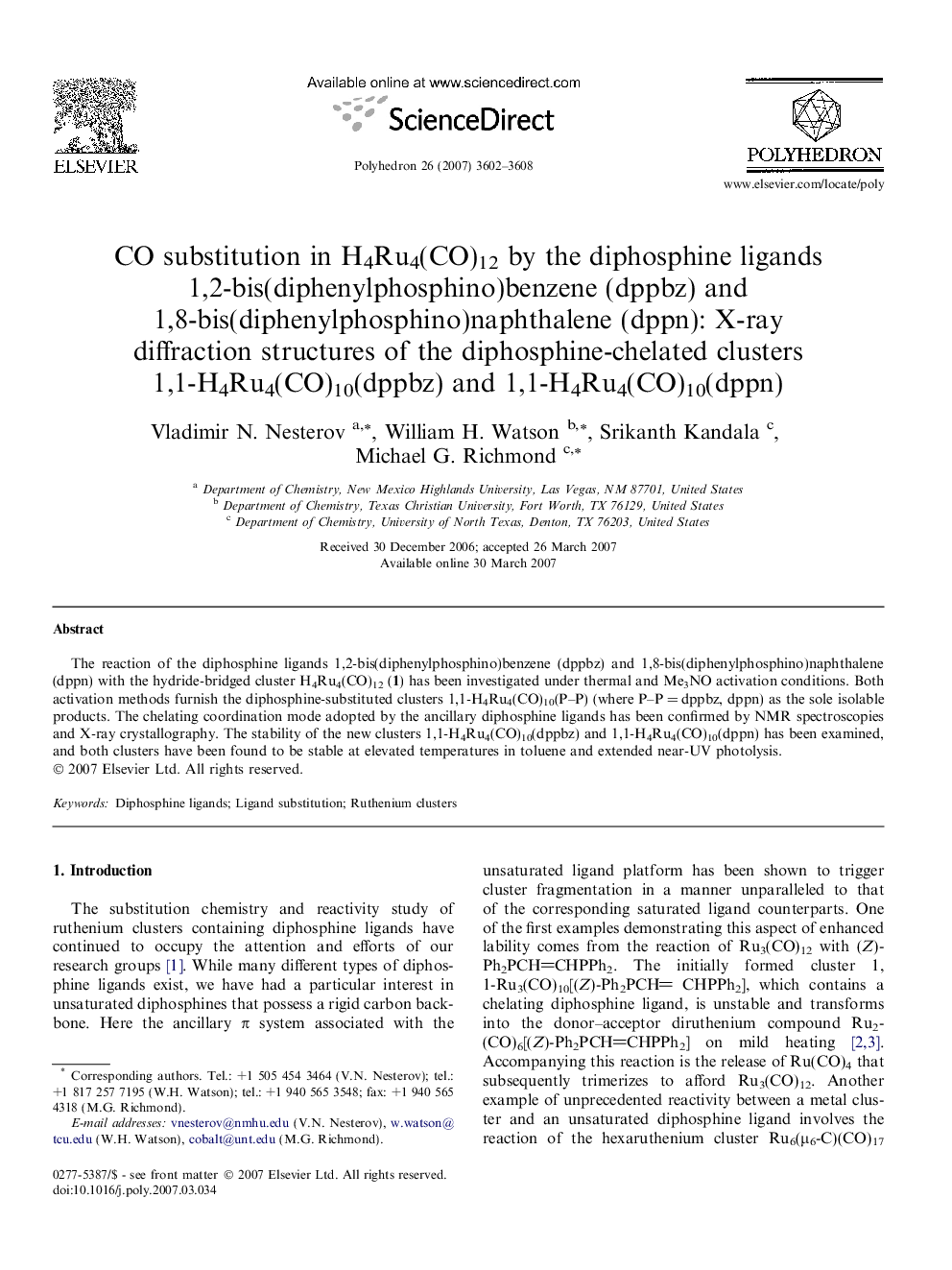| Article ID | Journal | Published Year | Pages | File Type |
|---|---|---|---|---|
| 1339733 | Polyhedron | 2007 | 7 Pages |
The reaction of the diphosphine ligands 1,2-bis(diphenylphosphino)benzene (dppbz) and 1,8-bis(diphenylphosphino)naphthalene (dppn) with the hydride-bridged cluster H4Ru4(CO)12 (1) has been investigated under thermal and Me3NO activation conditions. Both activation methods furnish the diphosphine-substituted clusters 1,1-H4Ru4(CO)10(P–P) (where P–P = dppbz, dppn) as the sole isolable products. The chelating coordination mode adopted by the ancillary diphosphine ligands has been confirmed by NMR spectroscopies and X-ray crystallography. The stability of the new clusters 1,1-H4Ru4(CO)10(dppbz) and 1,1-H4Ru4(CO)10(dppn) has been examined, and both clusters have been found to be stable at elevated temperatures in toluene and extended near-UV photolysis.
Graphical abstractThe reaction of the tetraruthenium cluster H4Ru4(CO)12 (1) with the unsaturated diphosphine ligands 1,2-bis(diphenylphosphino)benzene (dppbz) and 1,8-bis(diphenylphosphino)naphthalene (dppn) under thermolysis and Me3NO activation affords the diphosphine-chelated clusters 1,1-H4Ru4(CO)10(dppbz) (2) and 1,1-H4Ru4(CO)10(dppn) (3), respectively, as the only isolable products. Compounds 2 and 3 have been isolated and fully characterized by IR and NMR spectroscopies and X-ray diffraction analyses. The robust stability of 2 and 3 are discussed with respect to the other ruthenium clusters containing these diphosphine ligands.Figure optionsDownload full-size imageDownload as PowerPoint slide
